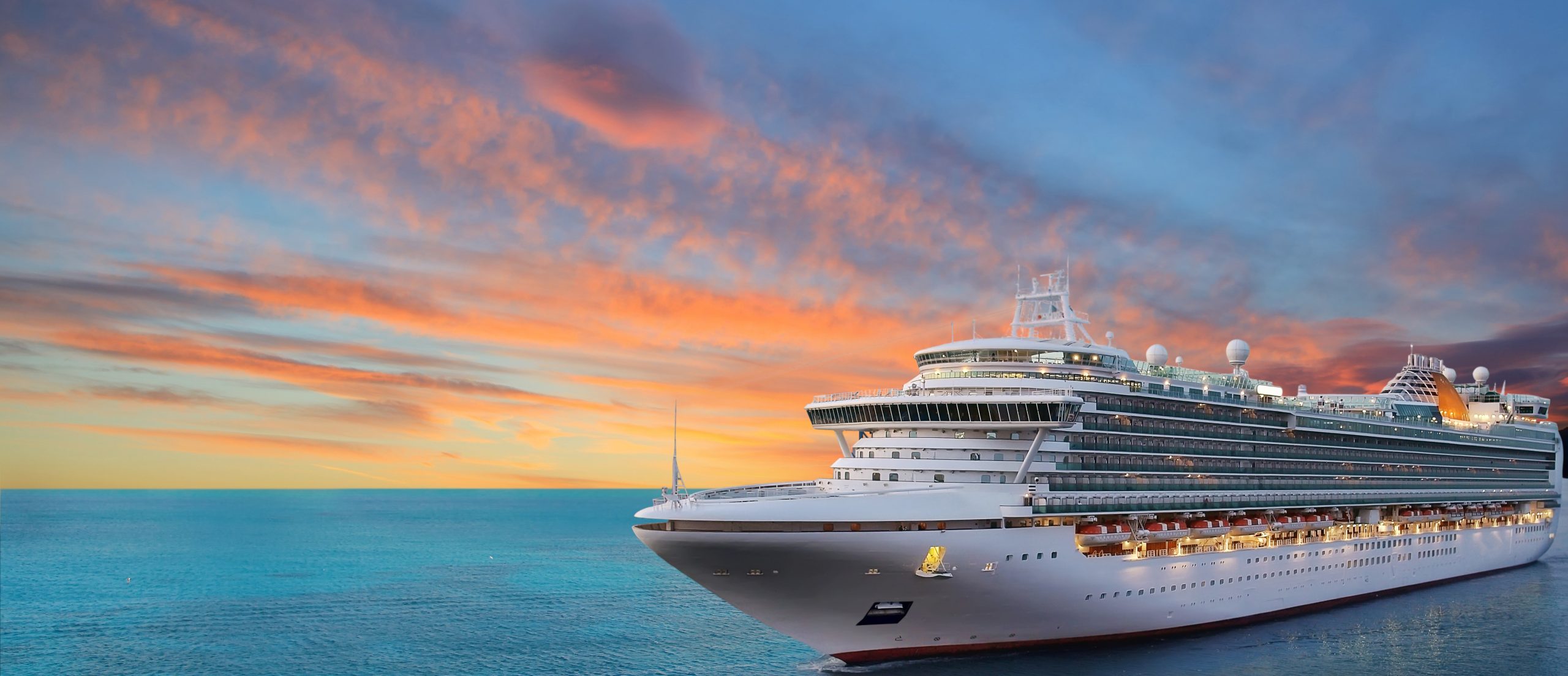Cruise Industry Analysis: Data Reveals Cruise Passengers Up 325%

The Cruise Lines International Association (CLIA) has just unveiled its highly anticipated 2022 Global Market Report, revealing some fascinating insights into the future of the cruise industry post-COVID-19. This comprehensive report covers 95% of the global cruise market and is a treasure trove of valuable information, shedding light on everything from passenger volumes to trip durations, origins, and destinations.
Trips to Discover plotted the numbers and located the gems within! Whether you’re a seasoned cruiser or a curious traveler eager to explore the world’s oceans, this analysis is an absolute must-read. Dive in and discover the exciting new horizons that await you!
Summary of Our Key Findings:
- Cruise passenger numbers skyrocketed by 325% in 2022 over 2021 but are still nearly a third lower than pre-pandemic levels.
- Longer cruises were more popular in 2022, with the share of 8-13 day trips up by 50% and two-week cruise passengers up eightfold.
- The Australian, New Zealand, and Pacific region saw the most impressive passenger origin and destination growth in 2022.
- The Caribbean, Bahamas, and Bermuda welcomed almost half of all cruise passengers last year, up from a third in pre-pandemic times.
- North American cruise tourism in Alaska and Asia/China fully recovered in 2022, surpassing 2019 visitor levels.
Passenger Totals and Schedules
Last year, more than 20 million people worldwide took a cruise, marking a whopping 325% increase from the previous year. While this is undoubtedly good news for the cruise industry, it’s important to note that these numbers are still down by almost a third from pre-pandemic levels. However, with all member cruise ships back on the water as of 2022, there’s plenty of optimism in the industry that we’ll continue to see growth in the coming years.
According to a recent survey by the CLIA, more people are planning cruises now than in 2019 — Indicating a solid resurgence in demand. The latest state of the industry forecast predicts a 6% rise in global cruise passengers for 2023 over 2019, with cruise passenger totals predicted to hit 31.5 million this year. If the forecast holds, the industry is poised to fully recover in 2023.
Passengers enjoyed more extended cruise vacations last year over 2021 as fears of the pandemic alleviated. The share of short cruises lasting up to three days saw a significant drop in popularity, while 8-13 day cruises became much more popular, growing by 50%. Two-week cruises were also a hit, sailing over eight times the number of passengers in 2021. Overall, the average passenger spent a week at sea.
However, average cruise lengths still reflected some impact from the pandemic last year. There were fewer cruises lasting over 15 days compared to 2019, suggesting some passengers were hesitant to spend extended periods at sea. Instead, there was a higher demand for week-long cruises.
Passenger Origins
We uncovered fascinating insights in the report about where cruise passengers were traveling from last year. Every globally tracked region sent more passengers aboard cruises in 2022 over 2021, averaging an 836% passenger increase. The top three grouped areas for passenger origin growth last year were:
- Australia, New Zealand and Pacific: Up 6629%
- Middle East and Arabia: Up 577%
- North America: Up 468%
While only at a quarter of the passenger volume in 2022 over 2019, the Australian, New Zealand, and Pacific group still sailed nearly half a million passengers last year. In addition to placing #1 for growth, this market came in #4 as the most significant source of cruise passengers in 2022 globally. Its considerable increase in cruise ship departures last year was due to Australia lifting a two-year ban on cruises in April 2022.
North America experienced the largest passenger growth last year in absolute totals. Ten million more North Americans set sail in 2022 than the previous year, with over 90% of these passengers coming from the U.S. For perspective, that increase alone is bigger than the rest of the world’s entire passenger count last year.
Only one region cast off more passengers in 2022 than in 2019, rebounding far past the pandemic’s decline. The Middle East and the Arabian market grew 38%, from just over 100 thousand passengers in 2019 to about 150 thousand last year.
Passenger Arrivals
In addition to analyzing passenger origins last year, we unearthed exciting insights from CLIA’s report into passenger destinations as well. In 2022, cruise tourists flocked to every tracked destination in greater numbers than the previous year. On average, there were over five times more passenger arrivals in 2022. The locations with the most significant increase in cruise arrivals were:
- Australia, New Zealand and Pacific Region: Up 3917%
- Alaska: Up 860%
- Transatlantic & World Cruises: Up 707%
- Africa and Middle East: Up 595%
- North America West Coast, Mexico, California and Pacific Coast: Up 439%
Alaska had trouble relaunching its cruises in 2021 because of an old law requiring ships to visit a foreign port when traveling between states. Cruises to Alaska stopped in Canada to meet this requirement, but Canada banned cruises until 2022. Congress passed the Alaska Tourism Restoration Act in May 2021, allowing ships to sail directly to Alaska without stopping in Canada. The passage of this act is the reason for Alaska’s extraordinary 860% growth in 2022.
Last year, cruises to the Caribbean, Bahamas and Bermuda were still down by 25% compared to 2019. However, the region welcomed almost half of all cruise ships worldwide, far more than in pre-pandemic times when it only claimed a third of international arrivals. However, just like in pre-pandemic times, the U.S. remained the most significant source (93%) of passengers destined for this region.
The Caribbean, Bahamas and Bermuda also sailed past global passenger recovery averages, capturing nearly half of the world’s growth last year. This growth was to some extent because there were fewer international destination options due to travel restrictions. Nevertheless, in terms of total passenger arrivals, the region recovered more passengers than every other restriction-free region, welcoming over 7 million more passengers in 2022 than the year before.
Passenger Demographics
We analyzed the report’s details on the backgrounds and types of individuals who took cruises last year. At age 46 and sailing just under a week per cruise, the North American passenger sat in the middle of the global pack in terms of age and average cruise length. The pandemic hardly shifted the demographics of the typical North American passenger, with no reportable differences.
On the other hand, the pandemic shook up the demographics of the Asian market. At an average age of 40, Asians represented the youngest cruise passengers globally, opting for far shorter, one- to two-day trips. The average age of Asian cruise passengers has decreased by a whopping seven years, and the average length of their cruises has reduced by 2.5-3.5 days.
However, passengers from Asia last year only accounted for 21% of pre-pandemic volume due to a ban on cruises in China that is just starting to lift internationally. In 2022, Chinese passengers primarily took domestic voyages that were intentionally scheduled to be shorter. Nevertheless, despite a 79% passenger deficit compared to 2019, the Asia market remained the third-largest global source of cruise passengers last year. With passenger volumes still this significant, these demographic changes highlight a noteworthy trend toward younger passengers taking shorter voyages in Asia.
Last year, passengers from Australia, New Zealand, and the Pacific were the oldest on global average and spent the most time at sea compared to other regions. These passengers, averaging just over 50 years old, embarked on voyages lasting nine days per trip.
As a proportion of total passengers by destination, the oldest cruise passengers were headed for exploratory destinations like the Arctic, Greenland, or North Cape. These cruises prioritize education, adventure, and exploring remote areas over luxury or onboard entertainment. The average age for passengers headed to these destinations was over 63, spending almost two weeks at sea per cruise. However, globally, exploration cruises make up less than 1% of total passenger numbers and represent a niche segment of the market.
North America in Focus
We analyzed North America’s flow of cruise passengers last year to reveal detailed insights about the #1 cruise-enthusiastic region globally. The top five destinations for North American cruise passengers and their share of total North American arrivals in 2022 were:
- Caribbean, Bahamas and Bermuda: 67%
- North America West Coast, Mexico, California and Pacific Coast: 9%
- Alaska: 9%
- Central and Western Mediterranean: 4%
- Canada and New England: 2%
North America’s share of total passenger arrivals for last year mostly mirrors 2019 levels. However, the Canada and New England region replaced the Panama Canal and South American region for #5 in 2022. Although either area only captures roughly 2% of passengers from North America annually.
Last year, two regions made an impressive comeback, fully recovering their North American cruise tourism levels. In fact, these regions saw more visitors in 2022 than in 2019. These two prosperous areas were:
- Alaska: 18,776 more passengers — 2% growth
- Asia and China: 6,717 more passengers — 4% growth
The significant growth in the Alaska, Asia, and China markets last year can be partially attributed to the already expanding fleet of cruises at these destinations before the pandemic. Although far more North Americans are sailing to Alaska yearly, Asian cruises are gaining immense popularity among North Americans with astounding annual growth.
Exploration destinations also gained massive popularity among North American travelers last year. North American arrivals to exploratory destinations increased by 15 thousand passengers, a 34% increase compared to the previous year. Half of all exploratory passengers were North Americans last year, twice as many as in 2019.
Methodology
Independent: Our research team conducts data analysis with independence and impartiality to ensure the integrity of the findings. Our research is editorially independent, but we may earn a commission for any purchases made through links on this page.
Secondary Research: This report was based solely on raw data from the Cruise Lines International Association (CLIA) 2022 Global Passenger Report and 2022 Passenger Flow Diagram released on 4/3/2023. The CLIA 2022 Global Passenger Report is based on internal data representing 95% of the global cruise industry’s capacity, supplemented by data from Tourism Economics and CHART Management Consultants for non-CLIA cruise lines. CLIA-cited forecasts were based on the 2023 State of the Cruise Industry Report released on 3/30/2023.
Data Threshold: The CLIA excludes source markets (where passengers come from) with less than 2,000 annual passengers and destination markets (passenger arrivals) with less than 4,000 yearly visitors from the 2022 Global Passenger Report. The CLIA excludes individual passenger flows (source-destination market pairings) with less than 5,000 annual passengers from the 2022 Passenger Flow Diagram. The exclusion of this data from the passenger flow chart only removes 0.9% or 179 thousand passengers from global yearly totals.
Replicability: The complete analysis for this project was created with the reports mentioned above in the secondary research section. The data in these reports and charts are in a visual format without explanation. We manually pulled all this data for interpretive analysis to present this information in an accessible and engaging manner. You can access and download the database behind our study here. We aim to give you a deeper understanding of complex data by reporting hidden trends and patterns in an engaging format.
Contact Us: If you have any questions about this study or are looking to build a similar project and would like to know more about our process, please don’t hesitate to contact us at [email protected], and we can walk you through the steps.


















